Table of Contents
Ready to ditch the crowded gym and sculpt your dream body from the comfort of your own home? You're not alone. More and more people are discovering the convenience and effectiveness of home workouts. But with so many options available, deciding what is the best home gym equipment can feel overwhelming. Don't sweat it! This guide cuts through the noise, providing a clear roadmap to building a home gym that fits your unique needs, budget, and fitness goals. We'll start by exploring how to personalize your equipment choices, ensuring every piece aligns with your specific workout style and ambitions. Then, we'll dive into the essential equipment that forms the foundation of any effective home gym, regardless of your fitness level. For those watching their wallets, we'll uncover affordable options that deliver maximum results without breaking the bank. And if you're ready to take your training to the next level, we'll explore advanced setups and cutting-edge equipment that will push your limits. Finally, we'll cover essential maintenance tips to keep your home gym in top shape for years to come. Let's get started on building your perfect home gym!
Finding What Is The Best Home Gym Equipment for You: A Personalized Approach
Finding What Is The Best Home Gym Equipment for You: A Personalized Approach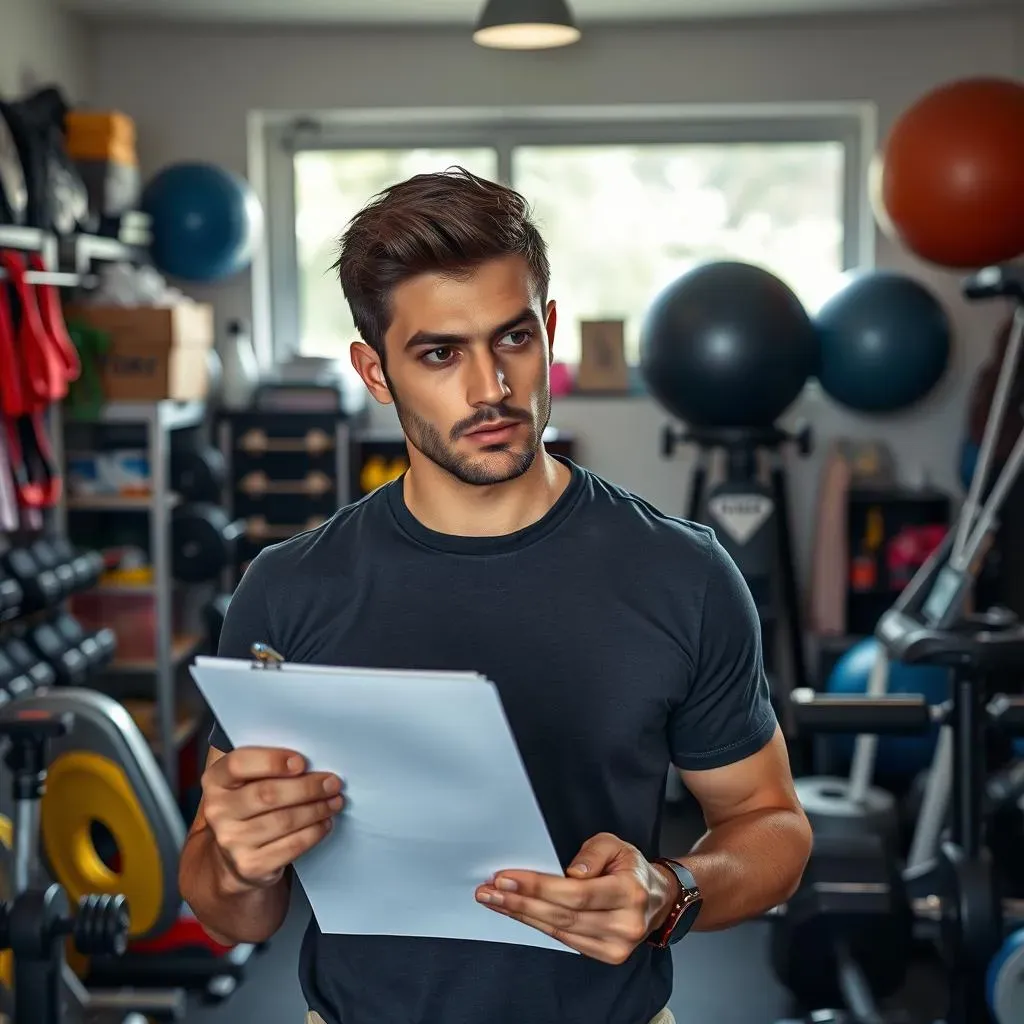
Assess Your Fitness Goals
Before you even think about buying a single dumbbell, take a good, hard look at your fitness goals. What do you *really* want to achieve? Are you aiming to build serious muscle, lose weight, improve your overall fitness, or train for a specific sport? Your answer will dramatically shape your equipment choices. For example, a powerlifter will have very different needs than someone training for a marathon.
Don't just say "get in shape." Be specific! "I want to be able to bench press my bodyweight," or "I want to run a 5k without stopping." The more precise your goals, the easier it will be to select the right equipment. Think of it like planning a road trip – you need to know your destination before you can map out the route.
Consider Your Available Space
Let's be real, not everyone has a spare room to dedicate to a home gym. So, space is a major factor. Measure your available area and be realistic about what you can fit. A sprawling power rack might be awesome, but not if it means you can't actually move around in your gym!
Think vertically! If floor space is limited, consider equipment that can be mounted on walls or ceilings, like pull-up bars or suspension trainers. Folding equipment, like foldable weight benches or treadmills, can also be a lifesaver for small spaces. Also, consider multi-functional equipment. Instead of buying individual machines, you can get one that serves multiple purposes. For example, an adjustable dumbbells is a great space saver.
Here’s a quick guide to help you assess your space:
- Small Space (Under 100 sq ft): Focus on compact and portable equipment.
- Medium Space (100-300 sq ft): You have more flexibility. Consider a power rack or a multi-gym.
- Large Space (300+ sq ft): The sky's the limit! You can create a fully equipped gym with a variety of machines and free weights.
Set a Realistic Budget
Home gym equipment can range from incredibly affordable to eye-wateringly expensive. Setting a budget upfront is crucial to avoid overspending and buyer's remorse. Don't feel like you need to buy everything at once. Start with the essentials and gradually add more equipment as your budget allows.
Consider buying used equipment. You can often find high-quality gear at a fraction of the price of new equipment. Just be sure to inspect it carefully for any damage or wear and tear. Also, don't forget to factor in ongoing costs, such as maintenance, repairs, and potential subscription fees for online fitness programs.
Here’s a sample budget breakdown to help you get started:
Budget Level | Example Equipment | Approximate Cost |
|---|---|---|
Budget-Friendly | Resistance bands, adjustable dumbbells, jump rope | $100 - $300 |
Mid-Range | Power rack, weight bench, barbell and plates | $500 - $1500 |
High-End | Smart home gym, high-end cardio machine, complete free weight set | $2000+ |
Essential Home Gym Equipment: MustHaves for Any Fitness Level
Essential Home Gym Equipment: MustHaves for Any Fitness Level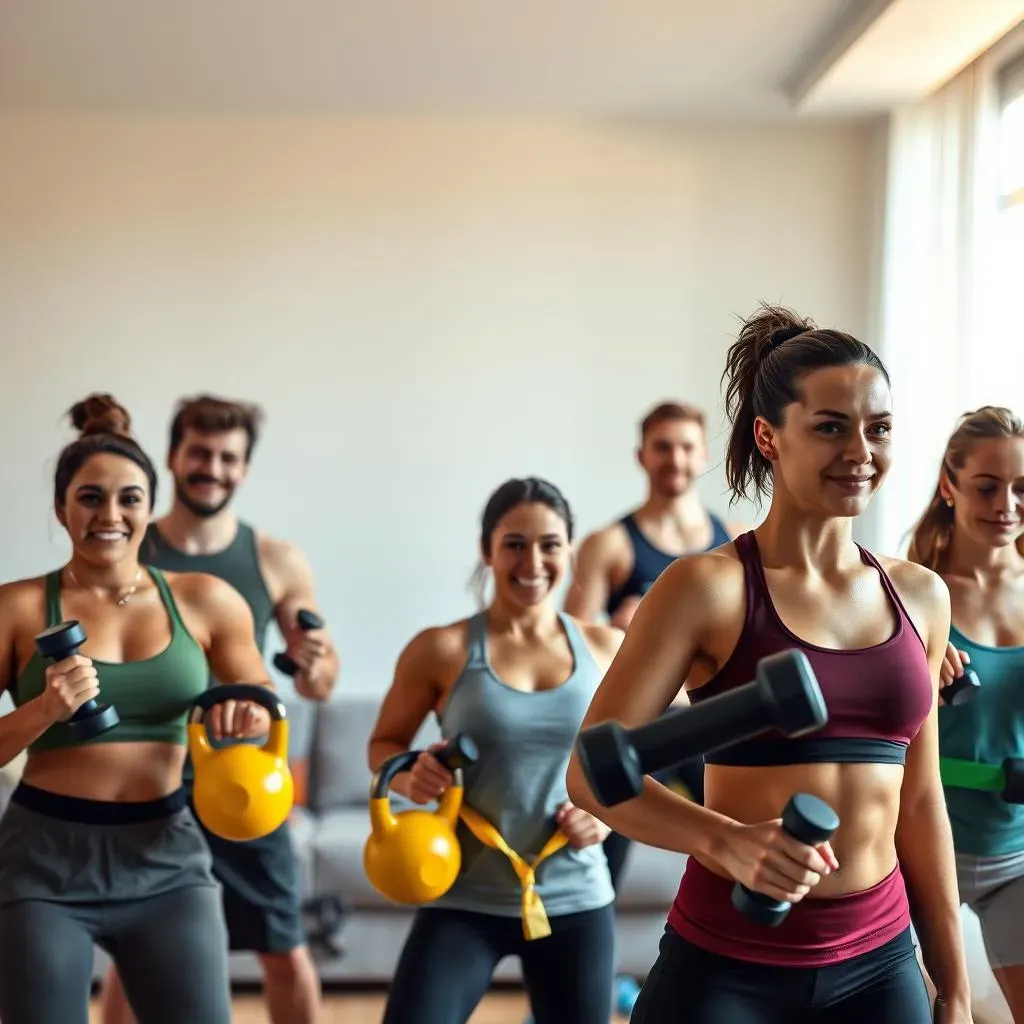
The Foundation: Weights and Resistance
Alright, let's talk about the core of any solid home gym: weights and resistance. Whether you're a seasoned lifter or just starting, having a way to challenge your muscles is non-negotiable. Now, this doesn't mean you need to drop a fortune on a full set of iron plates right away. Start with the basics and build from there.
Adjustable dumbbells are a fantastic option, especially if you're tight on space. They offer a wide range of weight options in a compact package. Kettlebells are another versatile tool, great for both strength training and cardio. And don't underestimate the power of resistance bands! They're lightweight, portable, and perfect for adding resistance to bodyweight exercises or assisting with pull-ups.
Here’s a quick rundown of essential weight and resistance equipment:
- Adjustable Dumbbells: Space-saving and versatile.
- Kettlebells: Great for strength and cardio.
- Resistance Bands: Portable and perfect for adding resistance.
- Pull-Up Bar: A must-have for upper body strength.
- Weight Plates and Barbell: For compound exercises like squats, deadlifts, and bench press.
Cardio Essentials: Get Your Heart Pumping
Strength training is important, but don't forget about cardio! A healthy heart is just as crucial as strong muscles. Luckily, you don't need a fancy treadmill to get your heart rate up at home. Jumping rope is an incredibly effective and affordable option. It's a full-body workout that burns calories and improves coordination. If you have a bit more space and budget, consider a stationary bike or a rowing machine. Both offer low-impact cardio that's easy on the joints.
High-Intensity Interval Training (HIIT) is your friend. You can do HIIT workouts with minimal equipment, focusing on bodyweight exercises like burpees, jumping jacks, and mountain climbers. The key is to alternate between short bursts of intense activity and brief recovery periods. This is a great way to torch calories and improve your cardiovascular fitness in a short amount of time.
Here’s a quote to keep you motivated:
Building a BudgetFriendly Home Gym: Affordable Equipment Options
Building a BudgetFriendly Home Gym: Affordable Equipment Options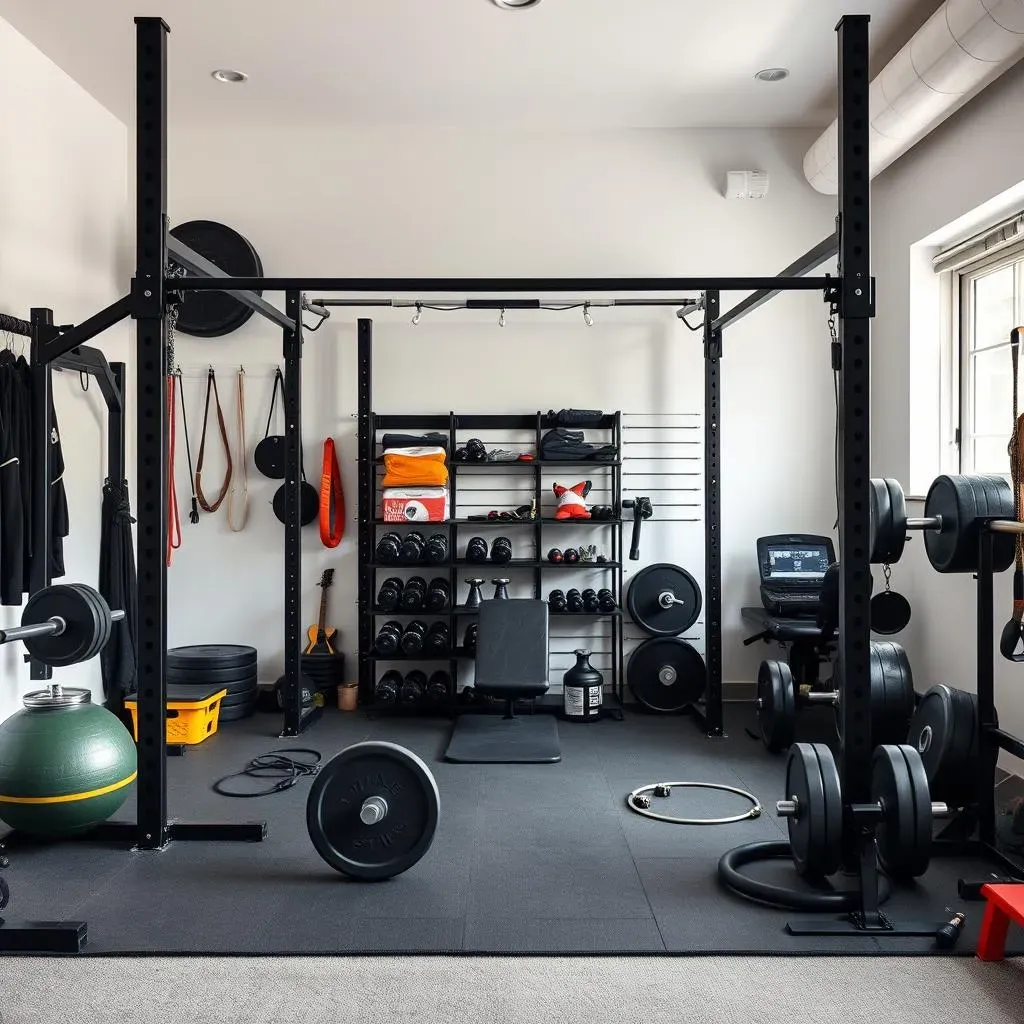
So, you're keen on building a home gym but don't want to empty your bank account? Awesome! It's totally achievable. Forget the image of a fancy, showroom-ready setup. A killer workout doesn't require top-of-the-line equipment. With a little creativity and smart shopping, you can create an effective and budget-friendly home gym that delivers serious results. The key is to focus on versatile, multi-purpose items that give you the most bang for your buck. Think minimal, not maximal. Prioritize function over frills, and you'll be surprised how far your money can go.
Let’s look at some of the most cost-effective options:
- Bodyweight Training: Seriously, don't underestimate it! Push-ups, squats, lunges, planks – these are all free and incredibly effective.
- Resistance Bands: A set of quality resistance bands offers a ton of exercise variety for under $50.
- Jump Rope: Cardio doesn't get much cheaper or more effective than a simple jump rope.
- Used Equipment: Check out online marketplaces or local classifieds for used dumbbells, kettlebells, or even weight benches.
Embrace Bodyweight Training
Seriously, bodyweight exercises are the unsung heroes of budget fitness. You already have the best piece of equipment – your own body! Mastering bodyweight movements builds a solid foundation of strength and stability. Plus, you can do them anywhere, anytime, with zero equipment. Push-ups are fantastic for your chest, shoulders, and triceps. Squats and lunges target your legs and glutes. Planks work your core. The possibilities are endless, and the price is unbeatable.
Want to take your bodyweight training to the next level? Try variations of classic exercises. Diamond push-ups are harder than regular push-ups. Pistol squats are more challenging than regular squats. Get creative and explore different angles and tempos to keep your muscles guessing. You can also use household items to increase the difficulty. For example, elevate your feet during push-ups to target your upper chest.
Here's a sample bodyweight workout you can do at home:
- Push-ups: 3 sets of as many reps as possible (AMRAP)
- Squats: 3 sets of 15 reps
- Lunges: 3 sets of 10 reps per leg
- Plank: 3 sets, hold for 30-60 seconds
- Jumping Jacks: 3 sets of 30 seconds
The Power of Resistance Bands
Resistance bands are a game-changer for budget-conscious home gyms. These stretchy wonders provide variable resistance throughout the range of motion, challenging your muscles in a unique way. Plus, they're incredibly versatile. You can use them for strength training, mobility work, and even assistance with exercises like pull-ups. A good set of resistance bands typically includes a variety of resistance levels, allowing you to gradually increase the challenge as you get stronger. They're also lightweight and portable, making them perfect for travel or working out on the go.
Don't underestimate the power of resistance bands! They can be used to target every muscle group in your body. Use them for bicep curls, tricep extensions, lateral raises, squats, and even chest presses. Get creative and experiment with different band placements and angles to find what works best for you. You can also combine resistance bands with bodyweight exercises to increase the intensity. For example, wear a resistance band around your thighs during squats to target your glutes even more.
Here’s a quick guide to choosing the right resistance bands:
Band Color | Resistance Level | Recommended Use |
|---|---|---|
Yellow | Light | Warm-ups, rehabilitation |
Red | Medium | Beginner strength training |
Green | Heavy | Intermediate strength training |
Blue | Extra Heavy | Advanced strength training |
Smart Shopping for Used Equipment
One of the best ways to save money on home gym equipment is to buy used. Online marketplaces like Craigslist, Facebook Marketplace, and eBay are treasure troves of pre-owned fitness gear. You can often find high-quality dumbbells, kettlebells, weight benches, and even larger machines at a fraction of the price of new equipment. The key is to be patient, do your research, and inspect the equipment carefully before you buy it. Look for any signs of damage, wear and tear, or rust. If possible, try out the equipment before you commit to buying it. Negotiate the price! Don't be afraid to haggle a bit, especially if the equipment is in less-than-perfect condition.
Don't be afraid to get your hands dirty! You might be able to score an even better deal if you're willing to fix up the equipment yourself. A little bit of elbow grease and some WD-40 can go a long way in restoring old gym equipment to its former glory. Just be sure to prioritize safety and follow proper repair procedures. Also, be aware of potential scams. If a deal seems too good to be true, it probably is. Always meet in a public place and never send money before you've seen the equipment in person.
Advanced Home Gym Setups: Taking Your Workouts to the Next Level
Advanced Home Gym Setups: Taking Your Workouts to the Next Level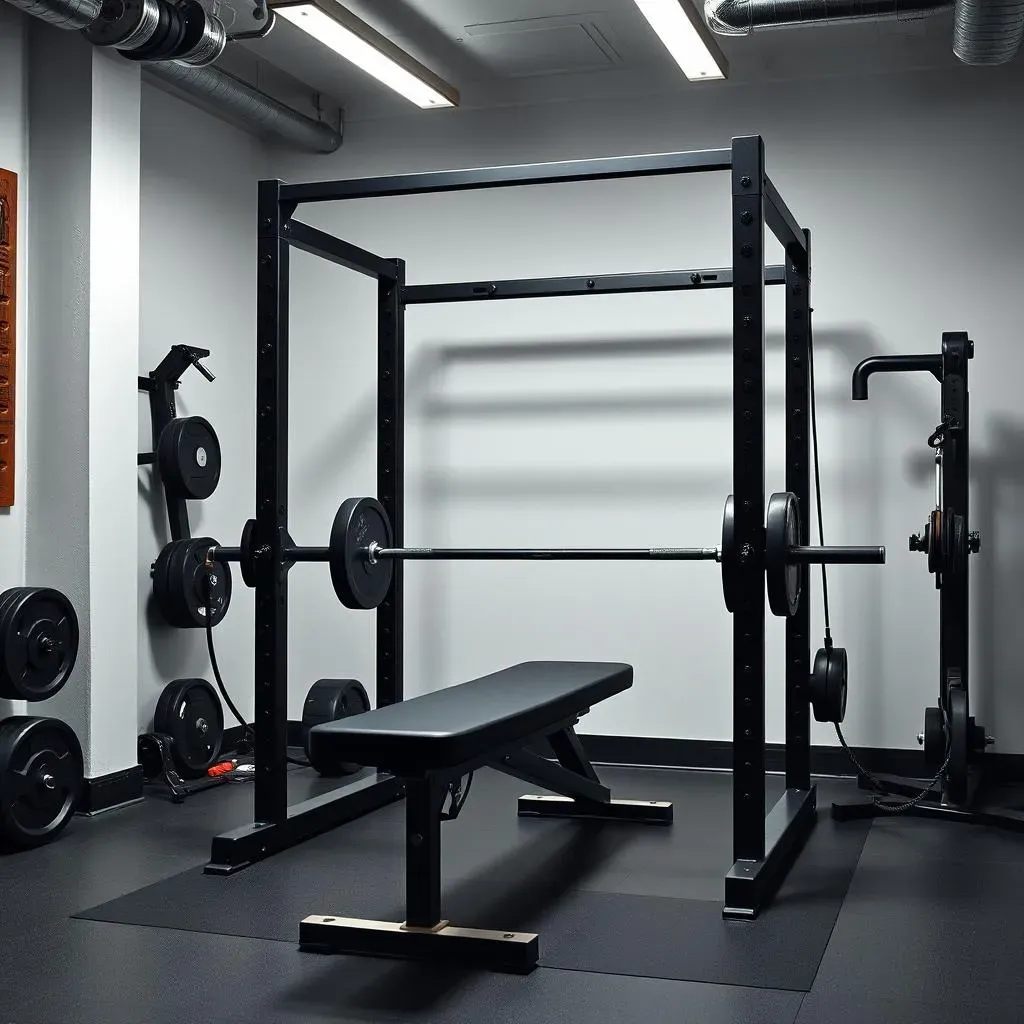
Investing in High-Quality Equipment
Ready to take your home gym to the next level? It's time to consider investing in some serious, high-quality equipment. We're talking about the kind of gear that not only enhances your workouts but also stands the test of time. This is where you start thinking beyond the basics and consider equipment that offers specialized functionality and superior performance. It's an investment in your long-term fitness goals, so choose wisely. A power rack is a cornerstone for serious strength training. Look for one with safety features like spotter arms and J-cups. A high-quality adjustable bench is also essential for a variety of exercises. Consider a cable machine for adding variety and targeting specific muscle groups. These machines offer a smooth, consistent resistance that's hard to replicate with free weights alone.
But, before you max out your credit cards, remember to plan carefully. Prioritize the equipment that aligns with your specific training goals. If you're a powerlifter, a top-of-the-line power rack and barbell are essential. If you're more focused on functional fitness, a cable machine and some specialty attachments might be a better investment. Don't be afraid to splurge on quality, especially when it comes to safety. A flimsy power rack or a wobbly bench is a recipe for disaster. Read reviews, compare brands, and choose equipment that's built to last. Also, consider the long-term maintenance requirements of your equipment. Some machines require regular servicing or replacement parts. Factor these costs into your budget to avoid any surprises down the road.
Here’s a list of equipment for advanced home gym setups:
- Power Rack: Essential for serious strength training with safety features.
- Adjustable Bench: High-quality bench for various exercises.
- Cable Machine: Adds variety and targets specific muscle groups.
- Specialty Barbells: Such as Olympic, safety squat, and trap bar.
- Plyometric Boxes: For explosive power and agility training.
Integrating Smart Technology
Welcome to the future of fitness! Smart home gym equipment is revolutionizing the way we work out. These high-tech machines offer personalized training programs, real-time feedback, and data tracking to help you optimize your workouts and achieve your goals faster. Smart treadmills and bikes adjust resistance and incline automatically based on your performance. Interactive mirrors display workout videos and provide feedback on your form. Smart dumbbells and kettlebells track your reps, sets, and weight lifted. These devices use sensors and AI algorithms to analyze your movements and provide personalized recommendations. They can also connect you with virtual trainers and online communities for motivation and support.
However, smart technology isn't just about fancy gadgets. It's about using data to make smarter training decisions. Track your progress, identify your strengths and weaknesses, and adjust your workouts accordingly. The key is to find a system that's easy to use and integrates seamlessly into your training routine. Make sure the equipment is compatible with your existing devices and apps. Look for features like heart rate monitoring, GPS tracking, and social media integration. Also, be aware of the privacy implications of using smart fitness equipment. These devices collect a lot of personal data, so make sure you understand how it's being used and protected. Choose a brand that's transparent about its data privacy policies.
Here’s a quote to keep you motivated:
Maintaining Your Home Gym Equipment: Tips for Longevity and Safety
Maintaining Your Home Gym Equipment: Tips for Longevity and Safety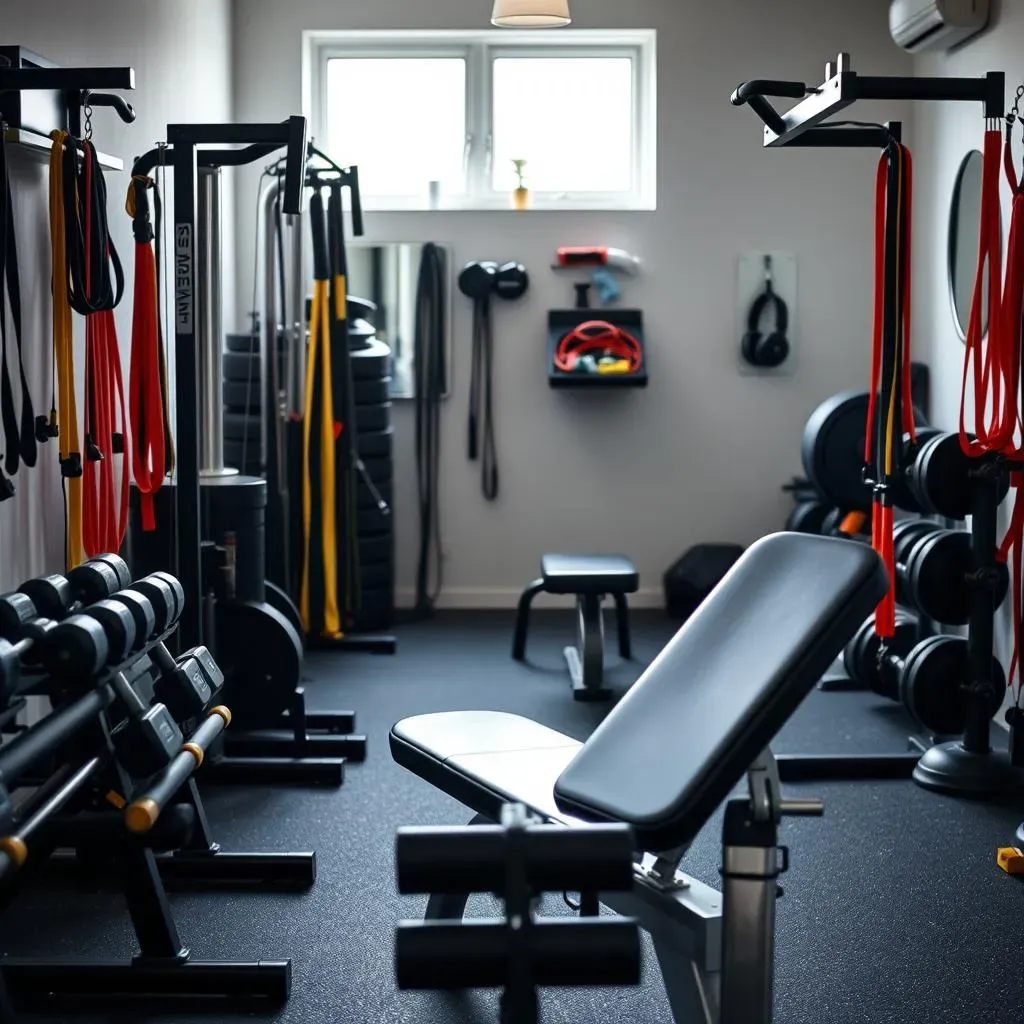
Regular Cleaning and Inspection
Alright, let's talk about the not-so-glamorous but absolutely essential part of owning a home gym: maintenance. Think of your equipment like a car – you wouldn't drive it for years without changing the oil, right? The same principle applies here. Regular cleaning and inspection are key to extending the life of your gear and ensuring your safety. Wipe down your equipment after every workout. Sweat is corrosive and can damage metal and upholstery over time. Use a mild soap and water solution and a clean cloth. Pay special attention to benches, dumbbells, and any other surfaces that come into contact with your skin. Inspect your equipment regularly for any signs of wear and tear. Check for loose bolts, frayed cables, cracked upholstery, and any other potential hazards. Address these issues promptly to prevent them from becoming bigger problems down the road.
Don't forget about the little things! Clean your resistance bands regularly to remove sweat and dirt. Store them properly to prevent them from drying out and cracking. Lubricate moving parts, such as hinges and pulleys, to keep them running smoothly. Use a silicone-based lubricant and apply it sparingly. Check your weight plates for cracks or chips. Replace any damaged plates to prevent accidents. Also, make sure your flooring is in good condition. Replace any worn or damaged mats to provide a safe and stable surface for your workouts.
Equipment Type | Cleaning Frequency | Inspection Frequency |
|---|---|---|
Weight Benches | After Every Workout | Weekly |
Dumbbells & Kettlebells | After Every Workout | Monthly |
Resistance Bands | Monthly | Every Use |
Power Racks | Monthly | Monthly |
Cardio Machines | After Every Workout | Monthly |
Proper Storage and Usage
How you store and use your equipment is just as important as how you clean it. Avoid dropping weights! This can damage both the weights and your flooring. Lower weights gently to the ground, especially when you're working with heavy loads. Use weight collars to secure your weight plates to the barbell. This will prevent them from sliding off during your workouts, which can be extremely dangerous. Store your equipment properly when you're not using it. Keep dumbbells and kettlebells on a rack or shelf to prevent them from becoming tripping hazards. Hang resistance bands on hooks or store them in a container to prevent them from tangling. Cover your equipment when it's not in use to protect it from dust and moisture. This is especially important if you live in a humid climate.
Follow the manufacturer's instructions for proper usage. Don't exceed the weight capacity of your equipment. Use the equipment only for its intended purpose. Don't try to modify or repair the equipment yourself unless you're qualified to do so. If you're unsure about how to use a particular piece of equipment, consult a qualified fitness professional. Always warm up before your workouts and cool down afterward. This will help prevent injuries and improve your performance. Listen to your body and don't push yourself too hard, especially when you're just starting. Gradually increase the intensity and duration of your workouts over time.
Your Ideal Home Gym Awaits
Building the best home gym is a deeply personal journey. It's about understanding your fitness aspirations, acknowledging your budget, and curating a space that motivates you to move. By carefully considering your needs and exploring the diverse equipment options available, you can create a home gym that empowers you to achieve your goals, one workout at a time. Remember to prioritize safety, invest in quality pieces when possible, and most importantly, enjoy the process of transforming your space into a personalized fitness sanctuary.